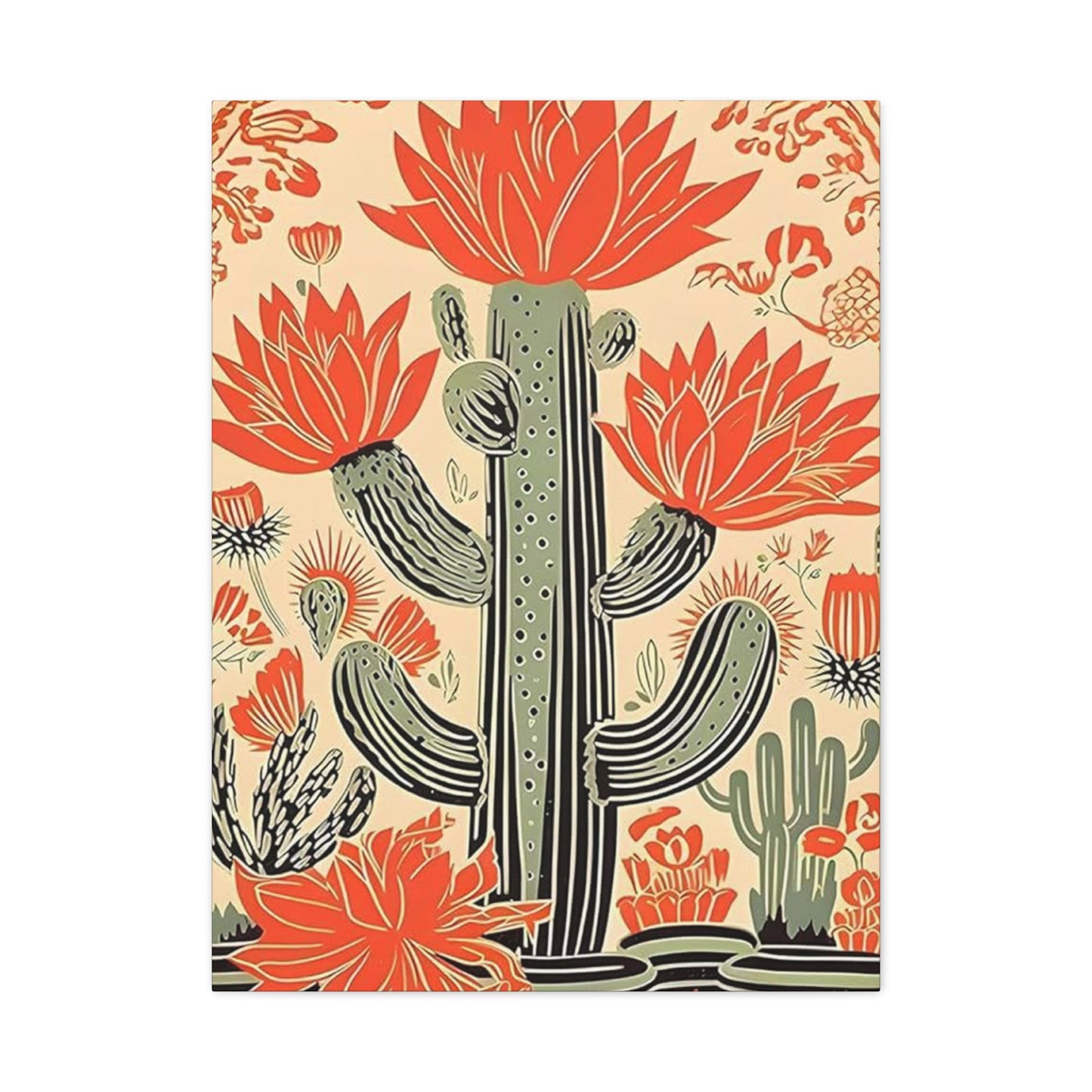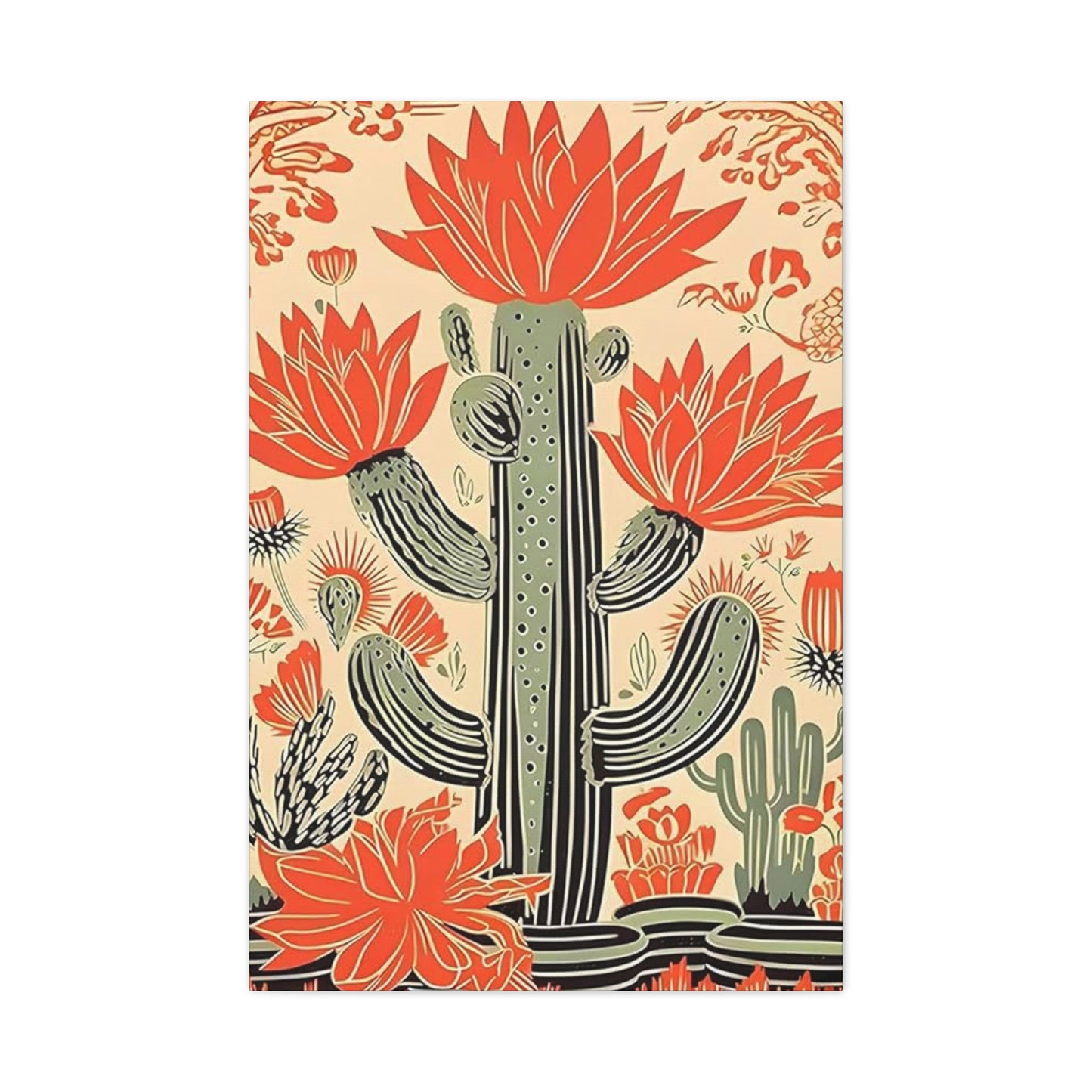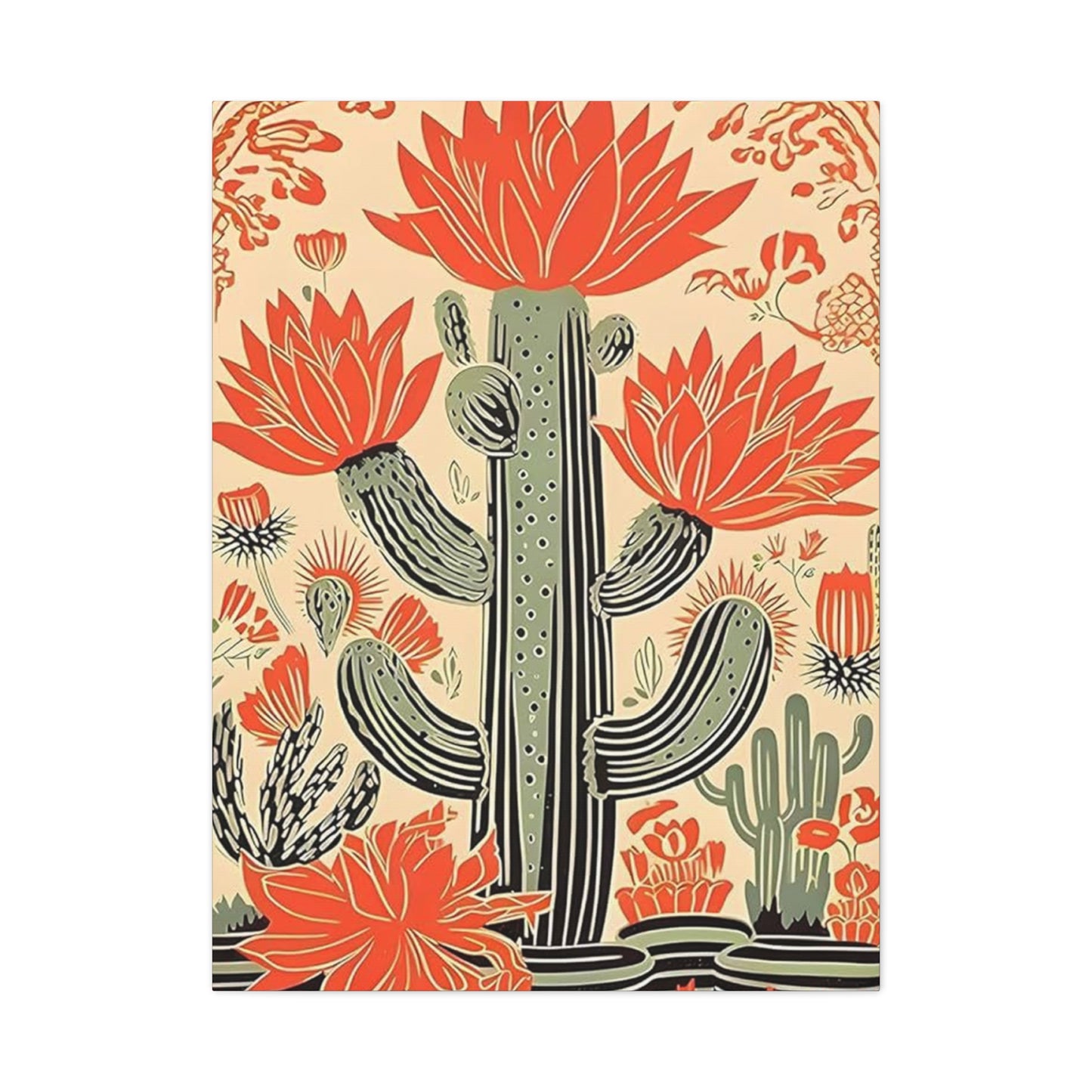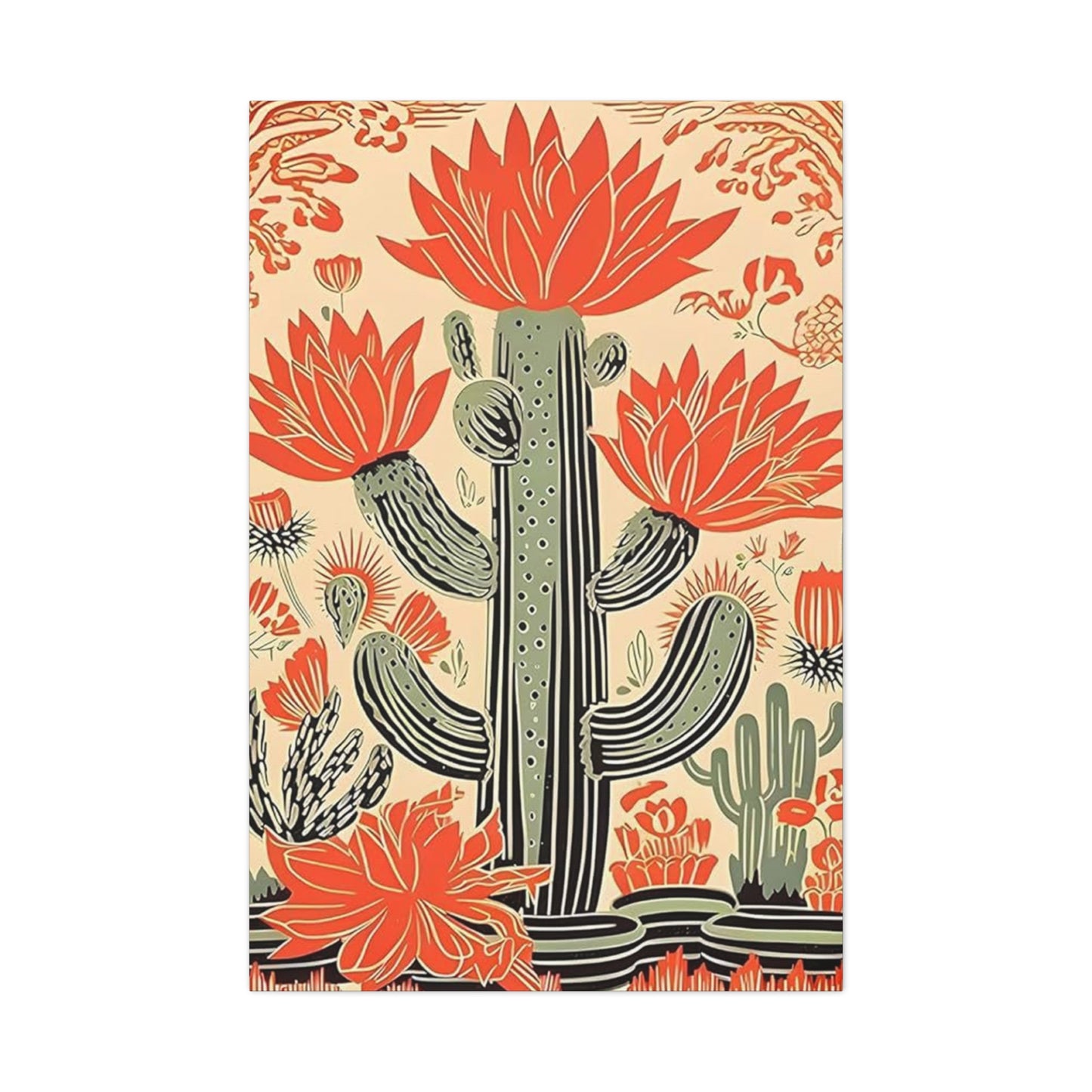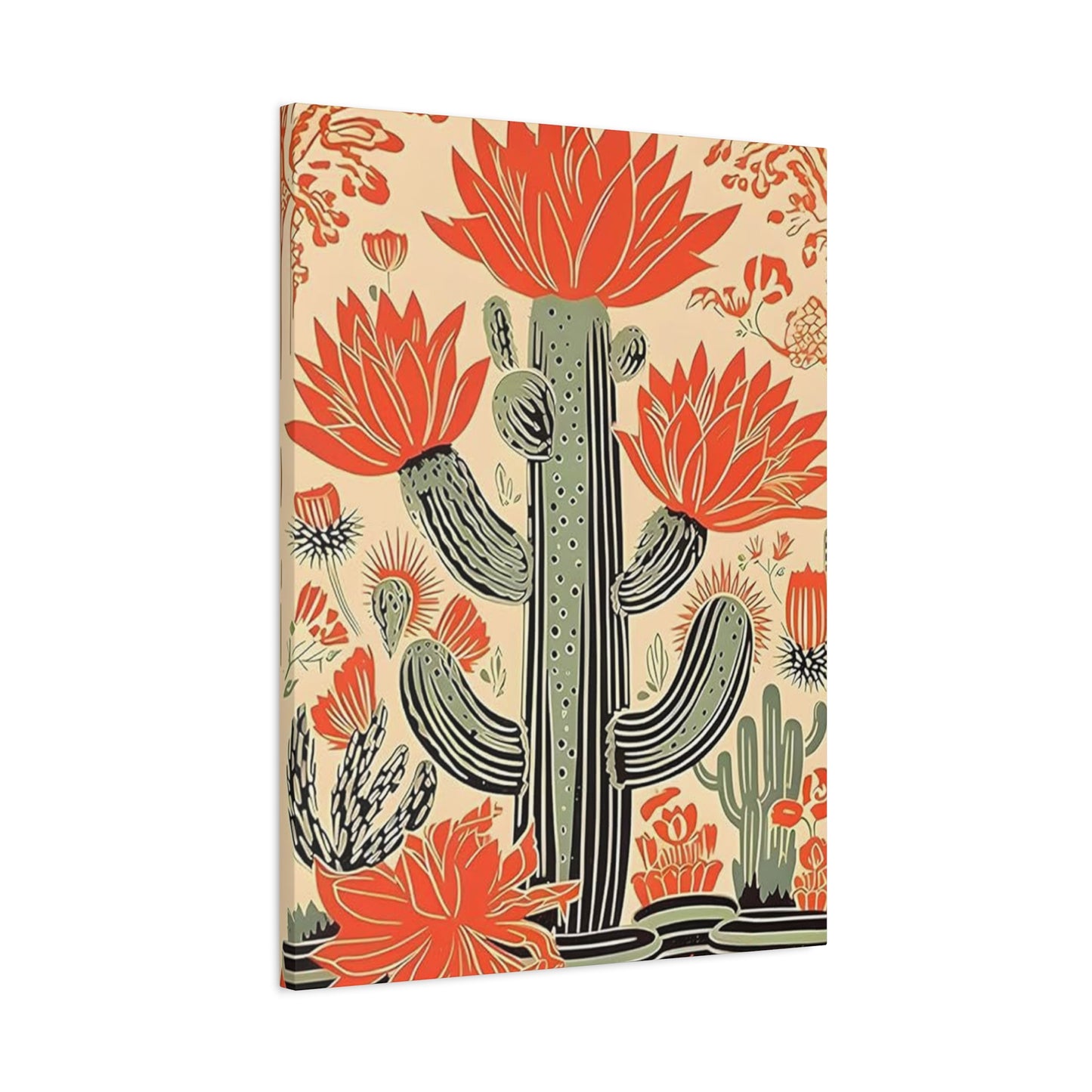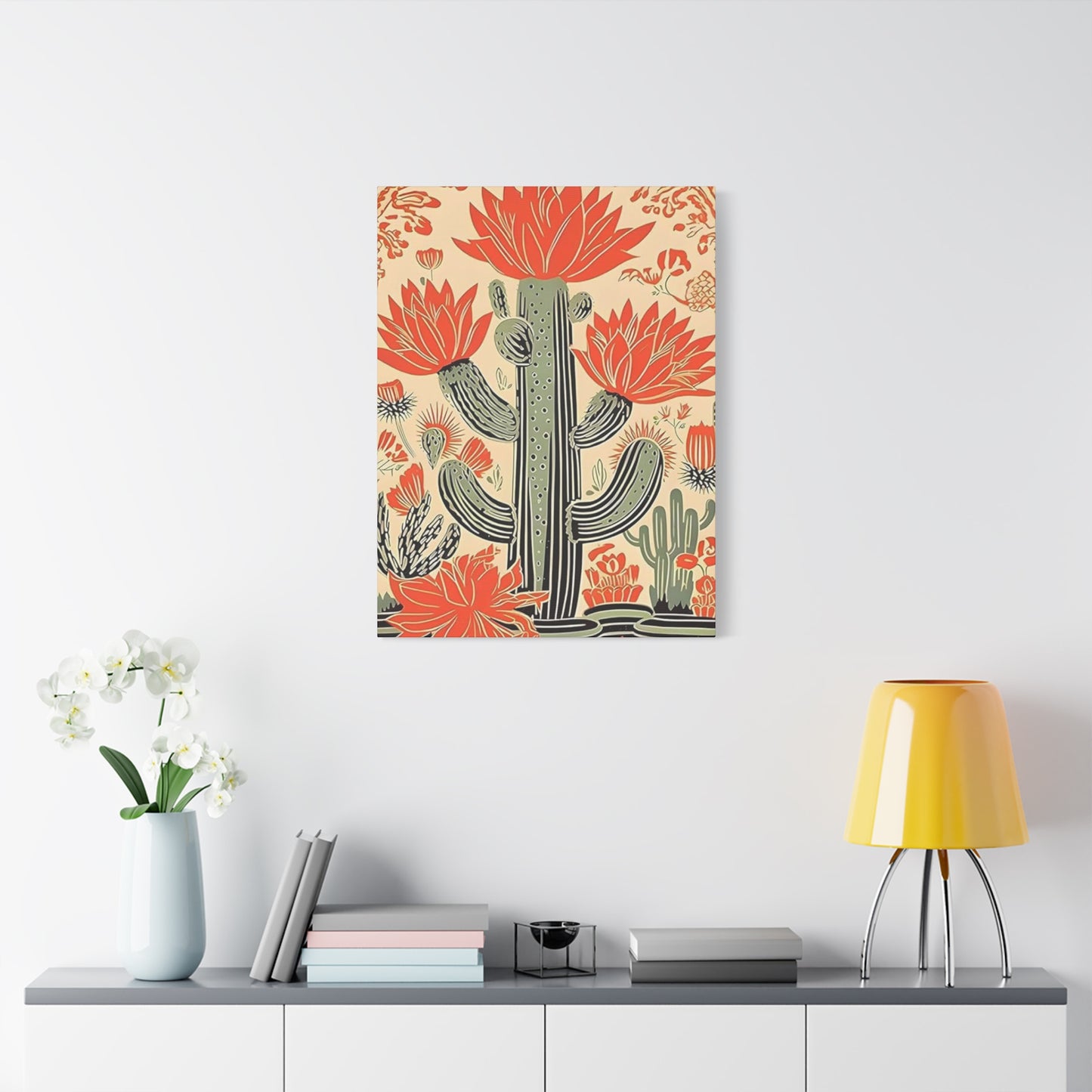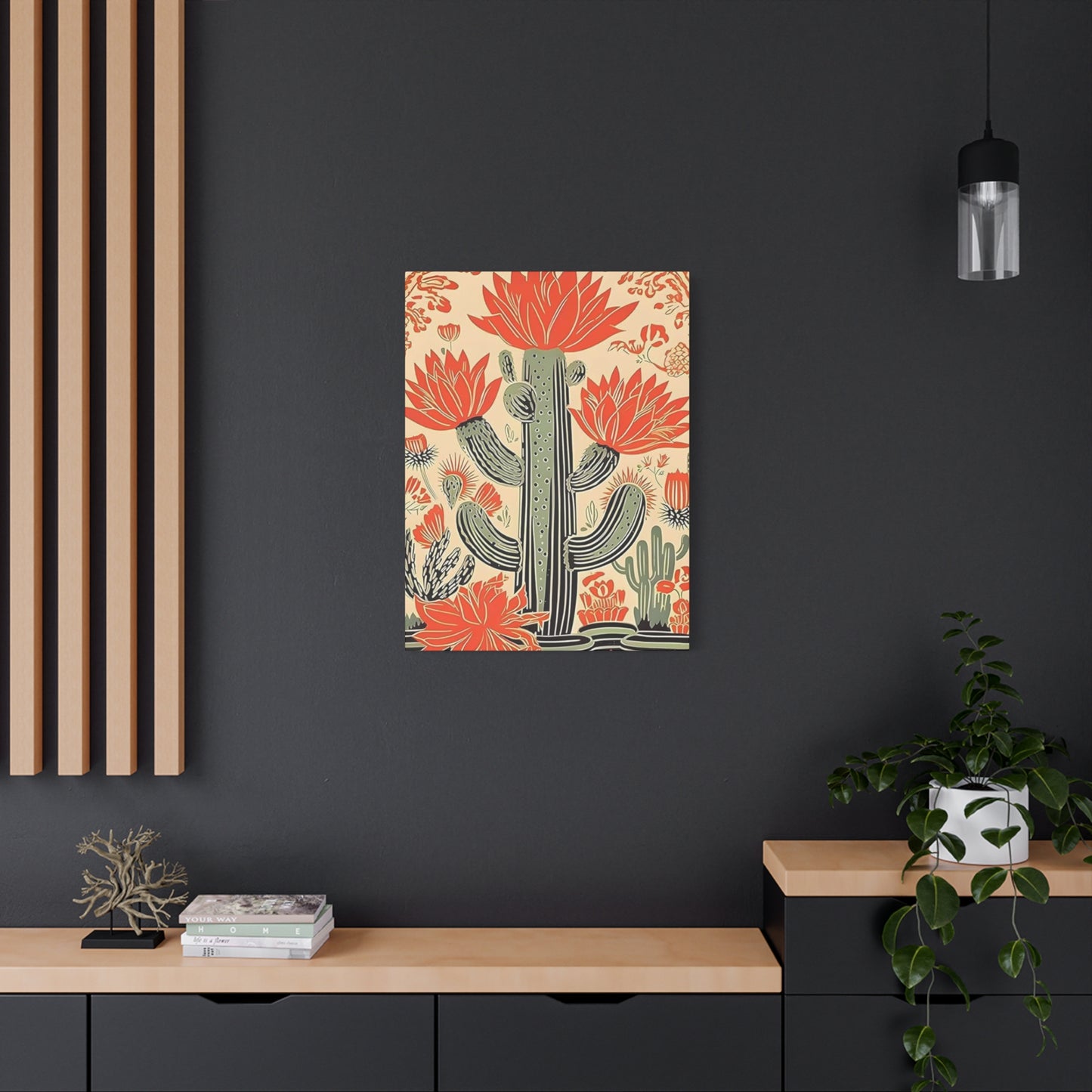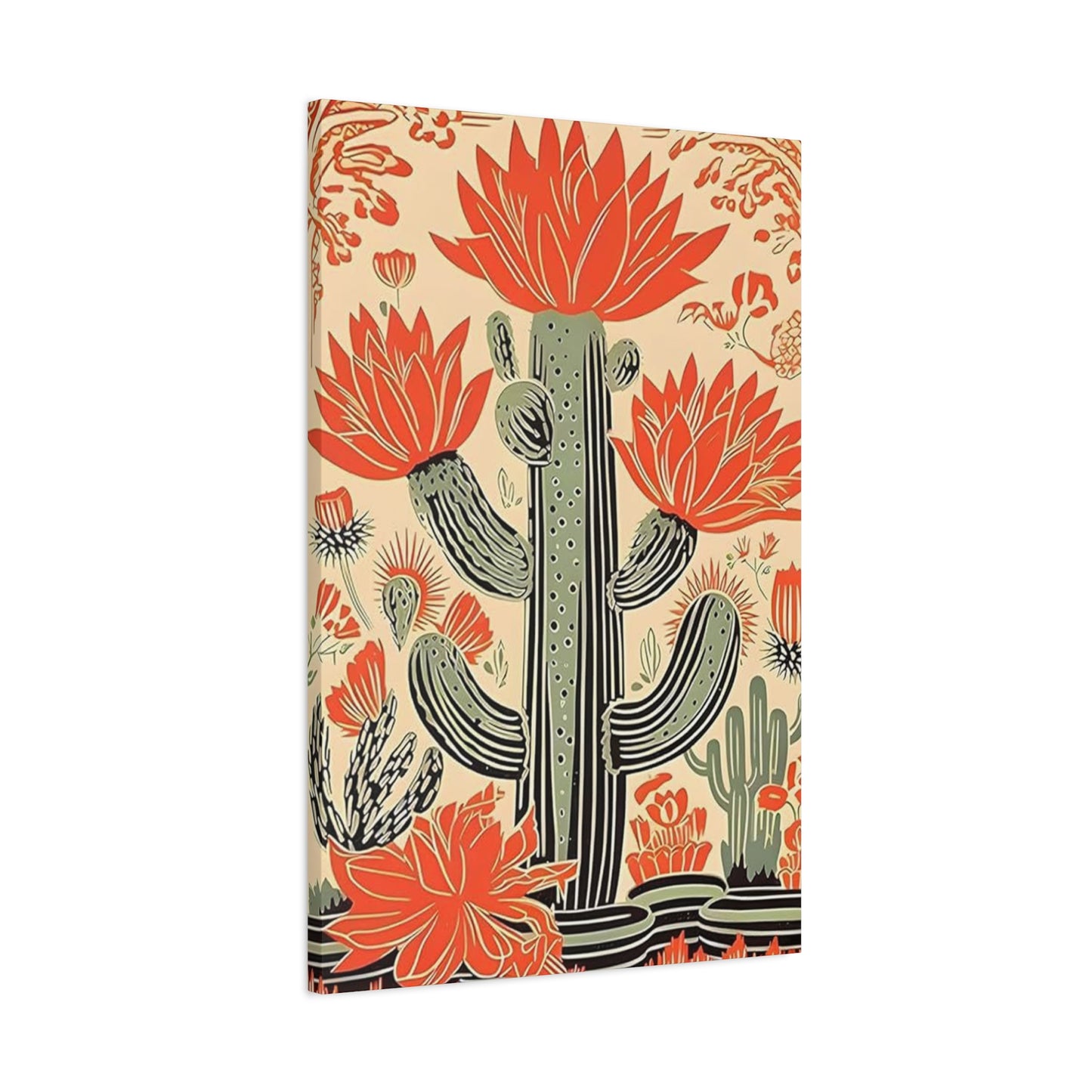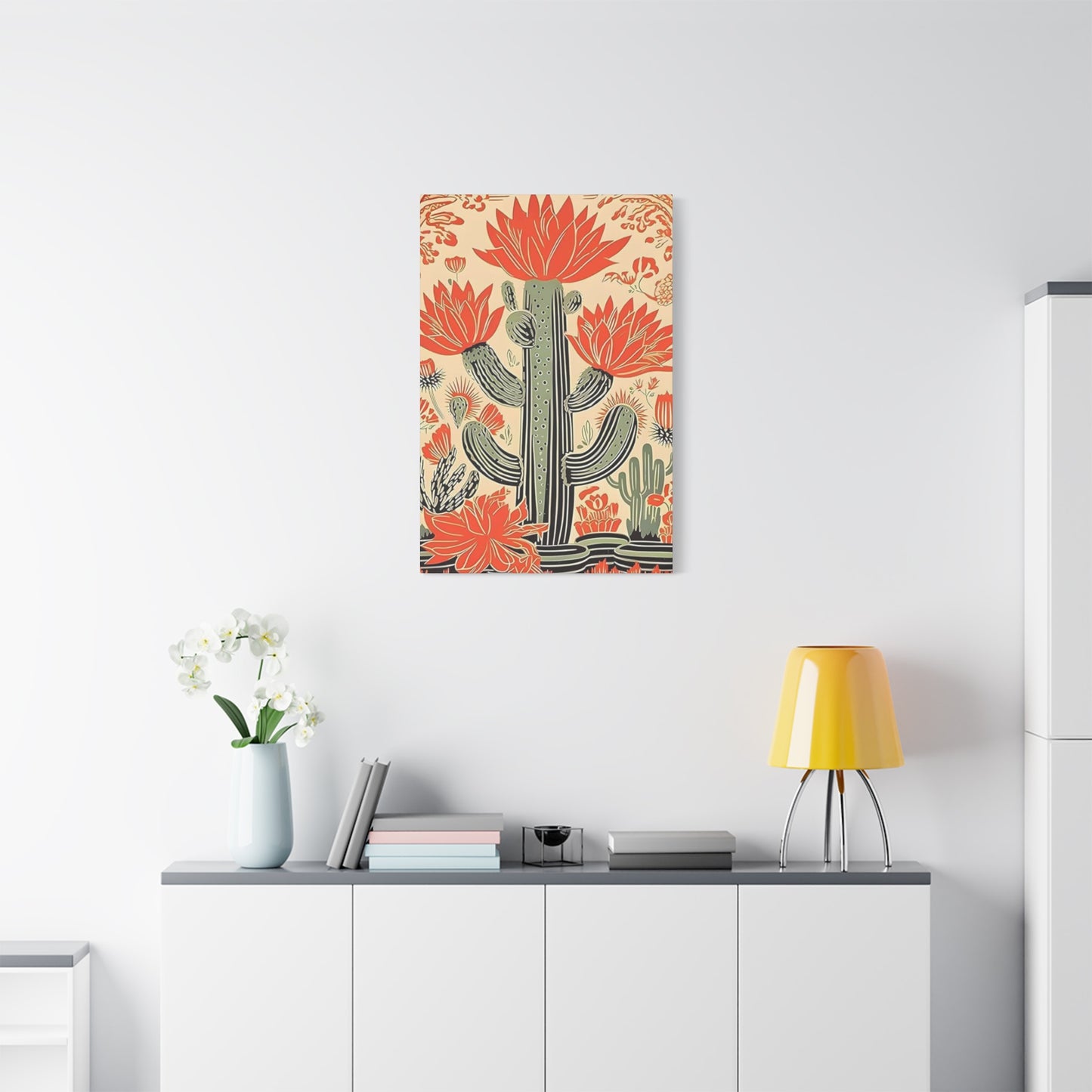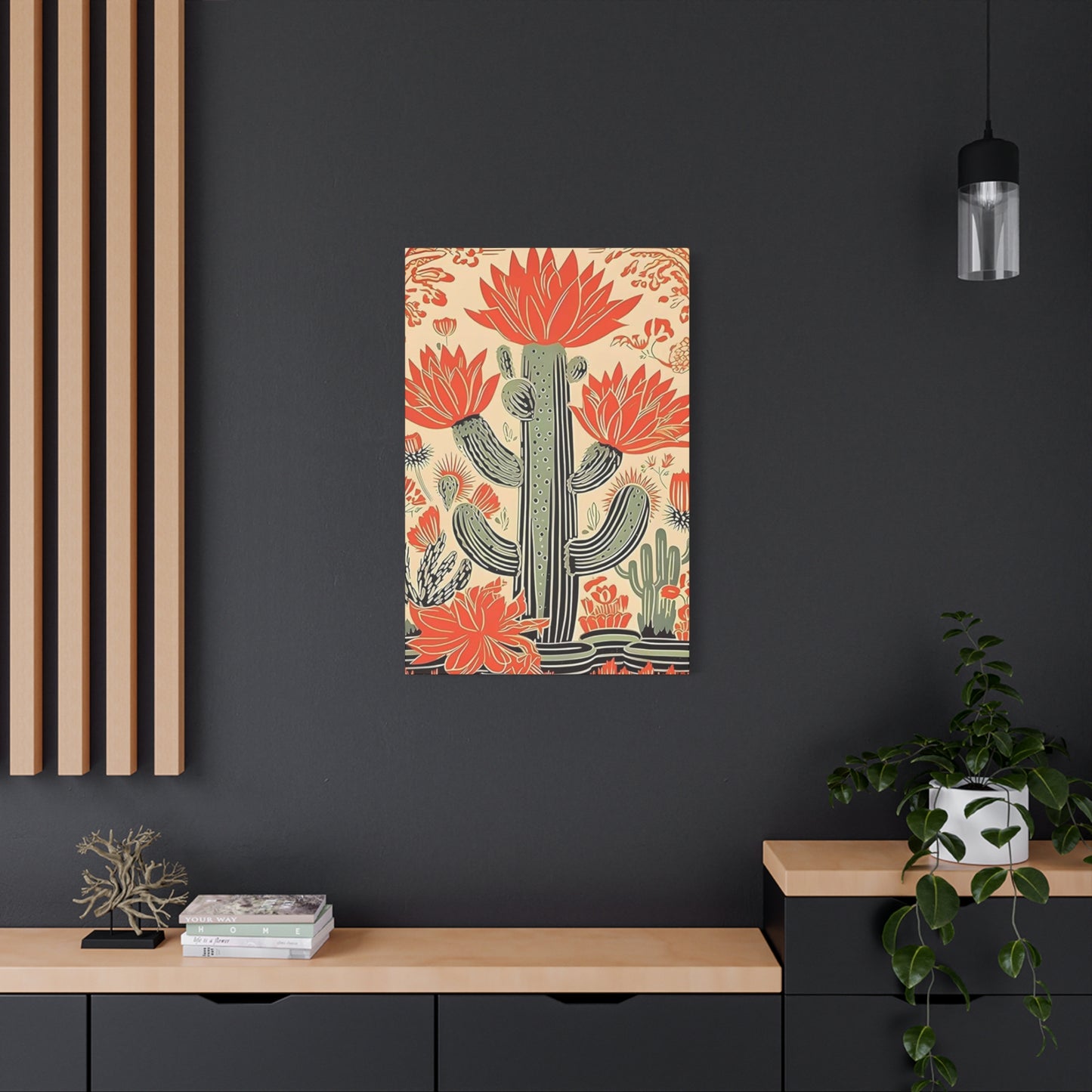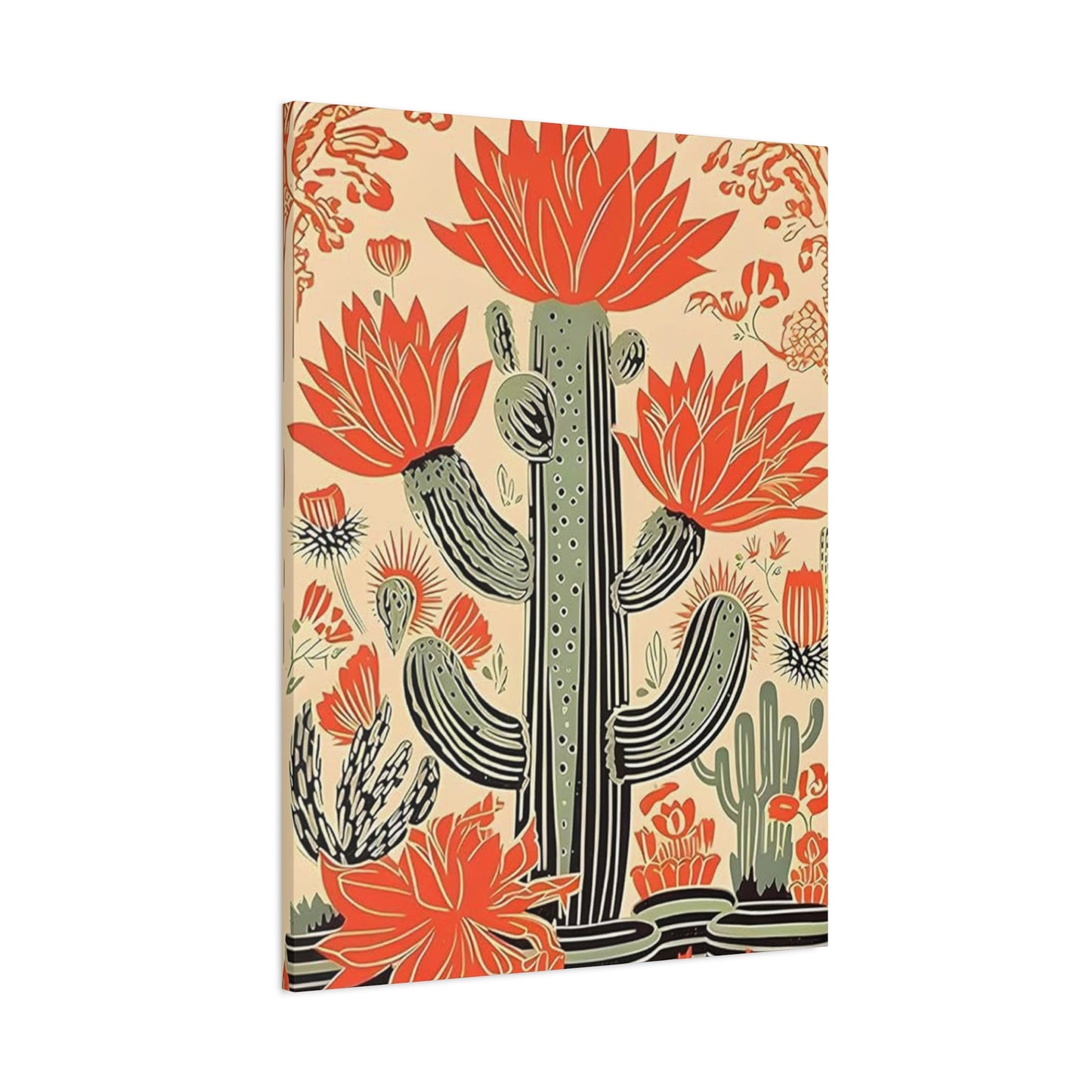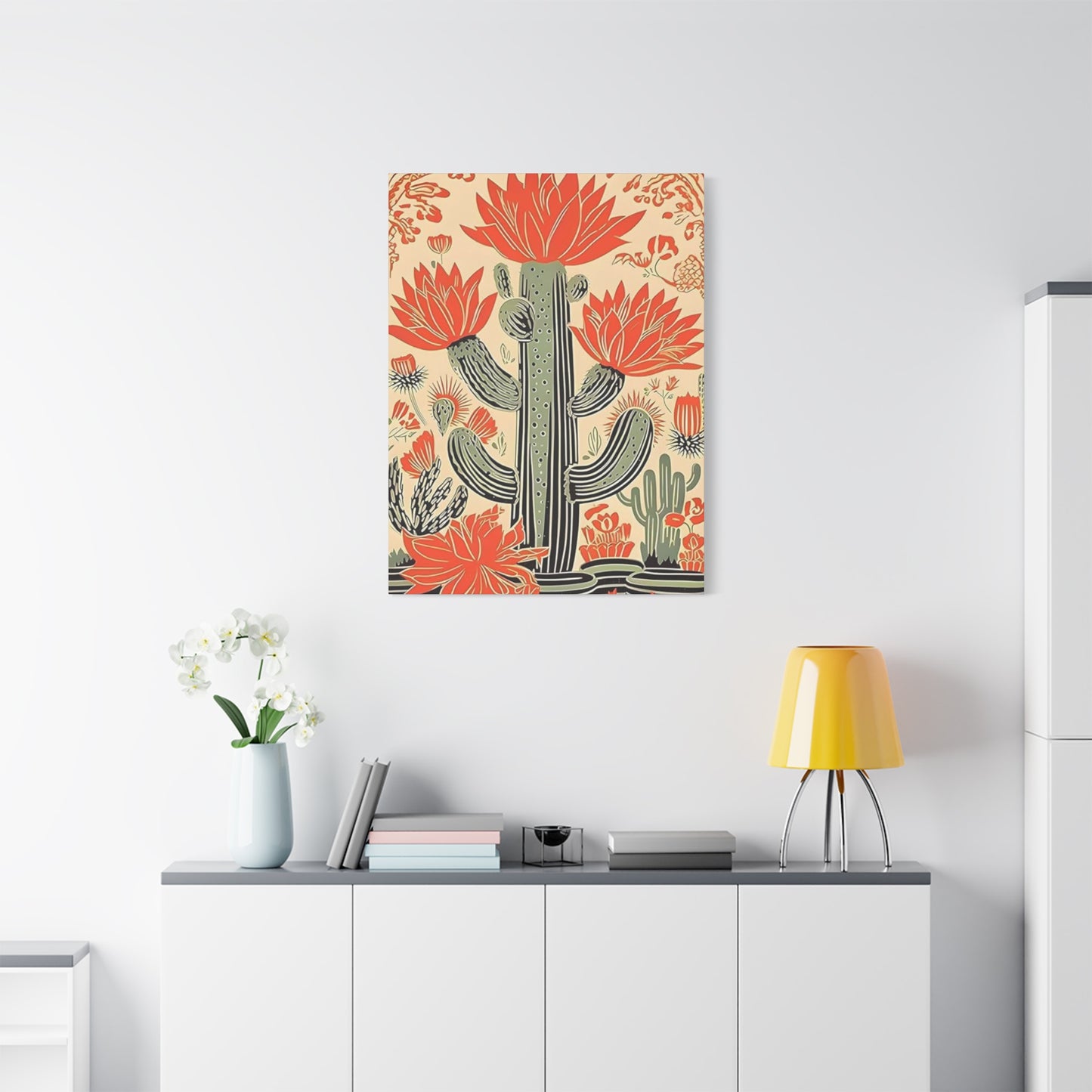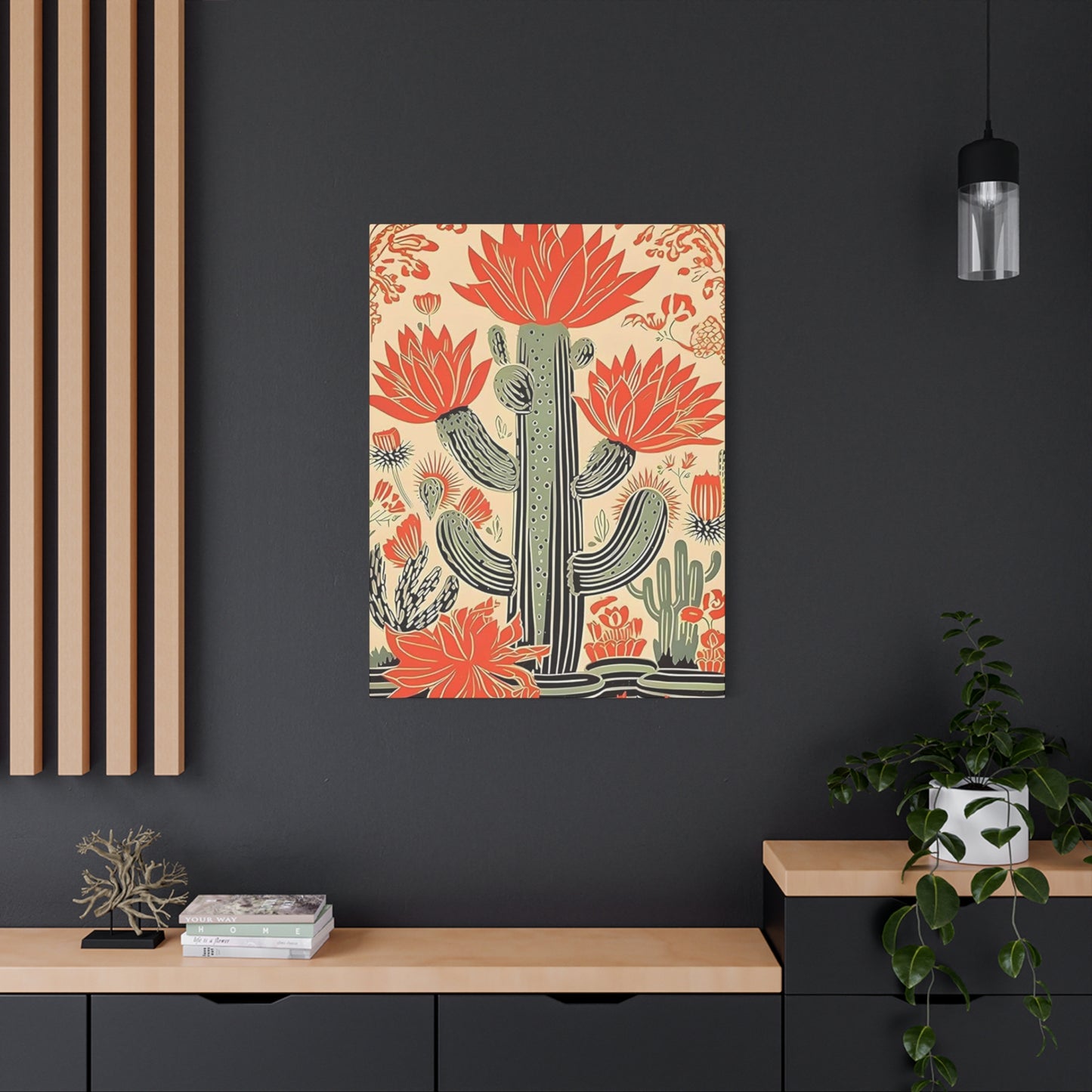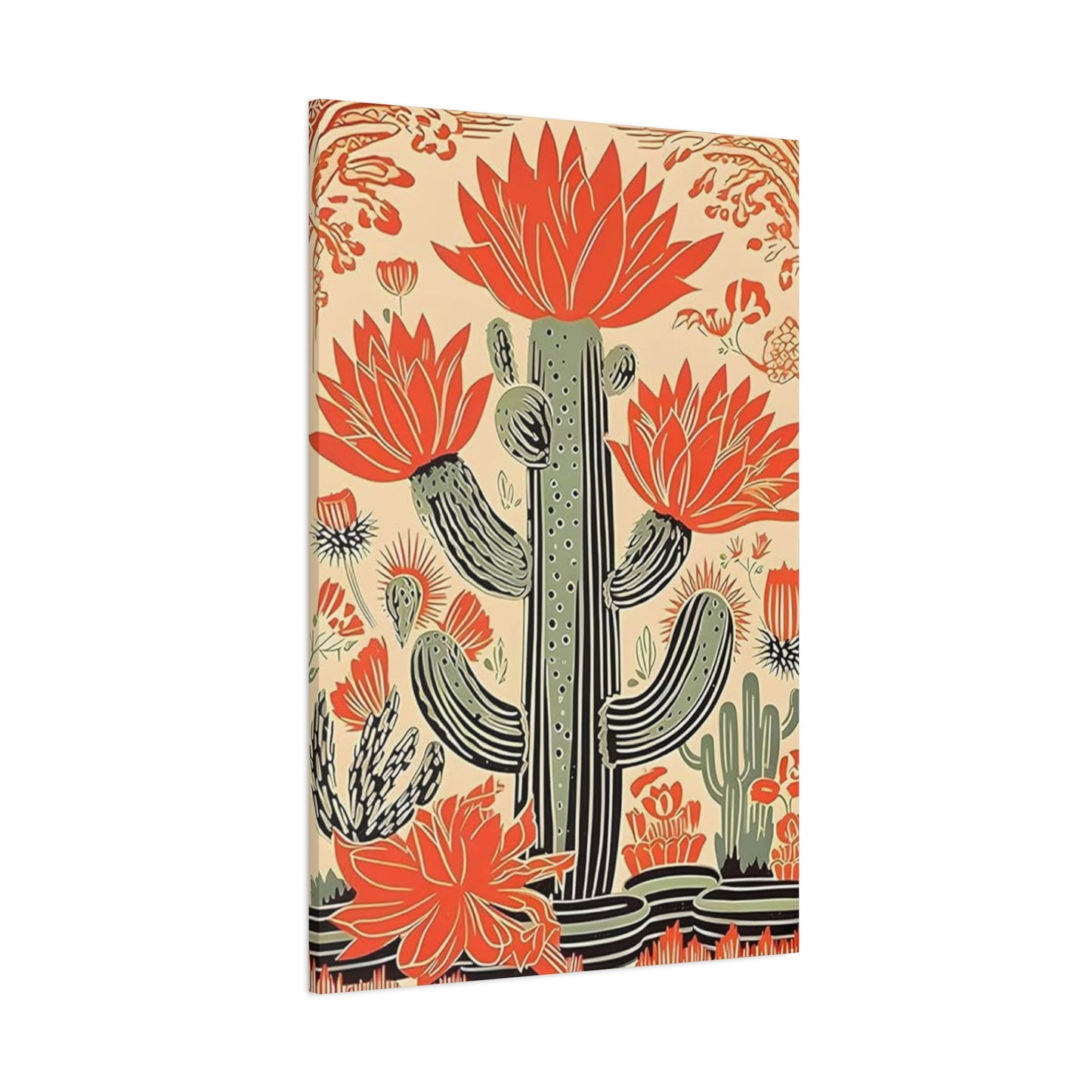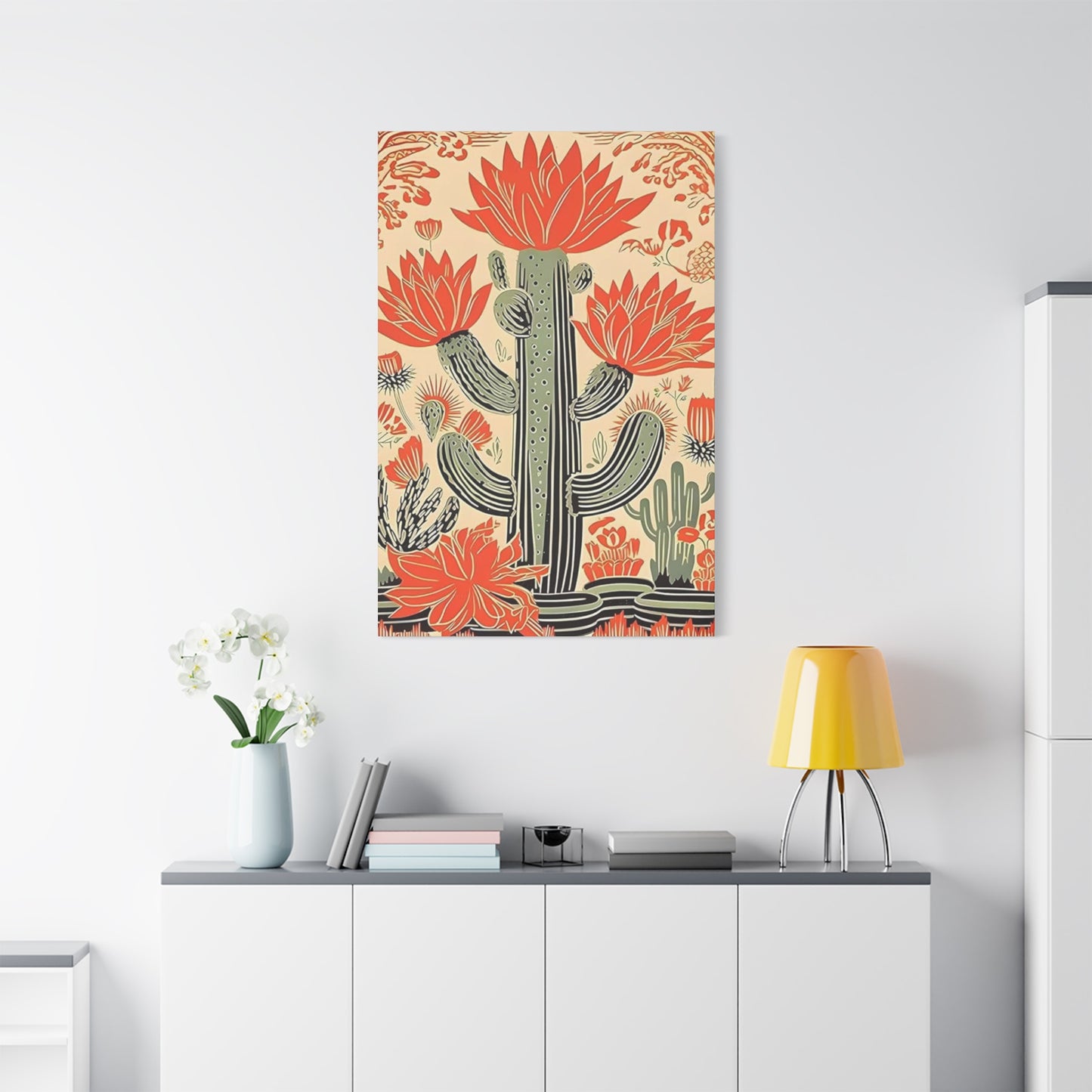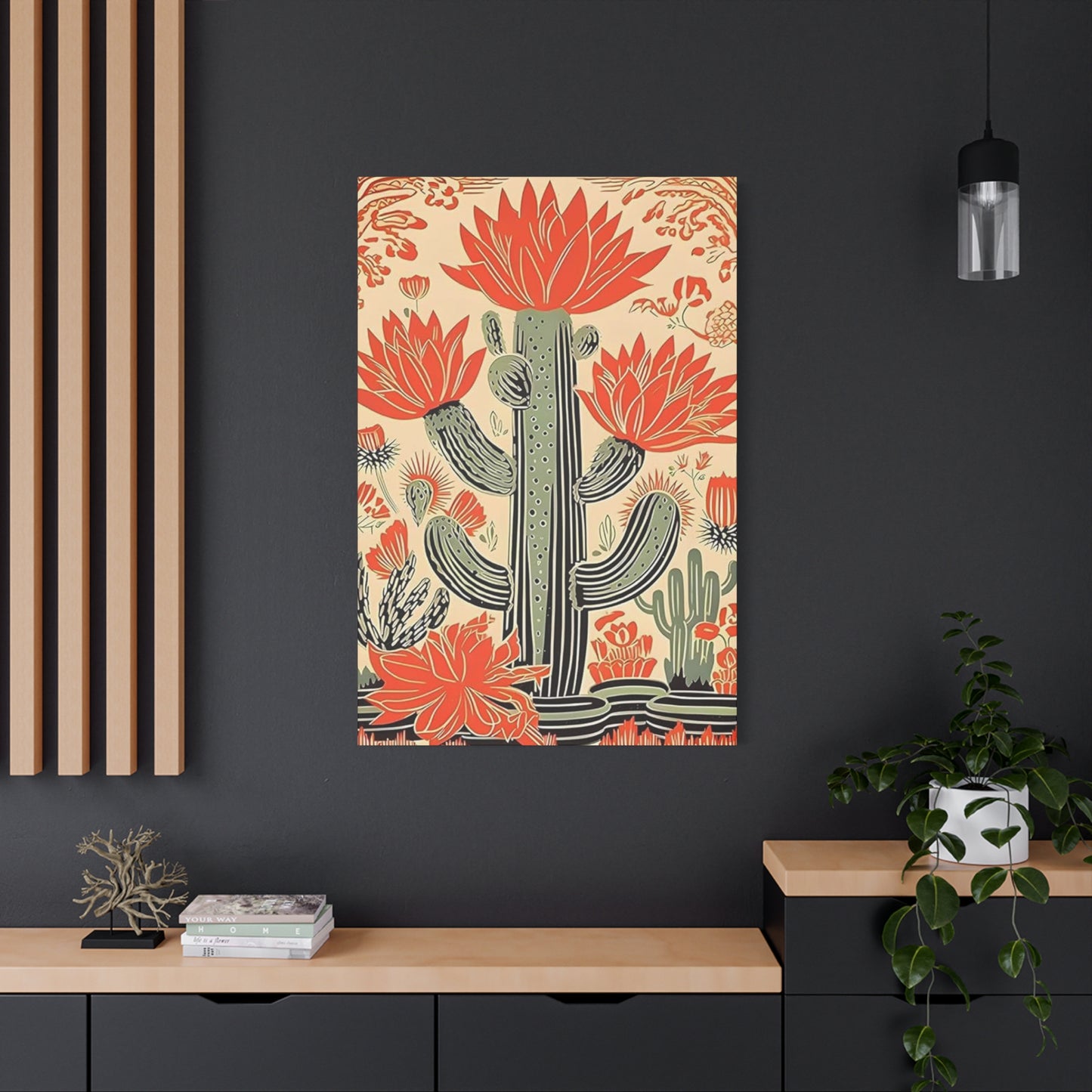Bringing Desert Landscapes Indoors Through Flowering Cactus Wall art Prints
The allure of desert landscapes has captured the imagination of homeowners and decorators worldwide, with flowering cactus prints emerging as a compelling way to introduce natural beauty into contemporary living environments. These remarkable botanical displays showcase the unexpected contrast between rugged desert plants and their delicate, vibrant blooms, creating visual narratives that speak to resilience, beauty, and the surprising wonders found in harsh environments.
Cactus flower wall art represents more than mere decoration; it embodies a philosophy of finding beauty in unexpected places and celebrating the triumph of life over adversity. The striking juxtaposition of thorny, protective exteriors housing magnificent floral displays creates compelling visual stories that resonate with viewers on multiple levels. These artistic representations capture moments of rare beauty, as many cacti bloom infrequently and for brief periods, making their flowering a celebrated event in nature.
The growing popularity of botanical themes in contemporary home decoration reflects a broader desire to reconnect with natural elements while maintaining modern aesthetic sensibilities. Flowering cactus prints satisfy this desire by offering sophisticated botanical imagery that avoids the overly sweet or conventional associations of traditional floral art. Instead, they present a more complex narrative that combines toughness with tenderness, creating conversation pieces that intrigue and inspire.
These artistic representations serve multiple decorative functions, from creating focal points in minimalist settings to complementing existing botanical collections. The versatility of cactus flower imagery allows for seamless integration into various decorating schemes, whether as standalone statement pieces or as part of larger gallery walls. The natural color palettes typically featured in these works, ranging from earthy desert tones to vibrant bloom colors, provide flexible options for coordinating with existing furnishings and color schemes.
Spectacular Flowering Cacti: Where Desert Toughness Meets Floral Beauty
The natural phenomenon of cactus flowering represents one of nature's most striking contradictions, where plants adapted for survival in harsh conditions produce some of the most spectacular floral displays found anywhere in the botanical world. This remarkable transformation from protective, spiny exteriors to delicate, colorful blooms creates compelling subject matter for artistic interpretation and home decoration.
Understanding the biology behind cactus flowering enhances appreciation for artistic representations of these phenomena. Most cacti conserve energy and water throughout the year, channeling resources into spectacular but brief flowering periods that maximize reproductive success. These blooming cycles often correspond with seasonal rainfall patterns or temperature changes, creating natural timing that adds urgency and preciousness to the flowering display.
The diversity of cactus flowers provides endless inspiration for artistic interpretation. From the large, showy blooms of barrel cacti to the delicate flowers of smaller desert species, each variety offers unique aesthetic possibilities. Some cacti produce flowers in brilliant reds, oranges, and yellows that seem to glow against desert backgrounds, while others feature more subtle pastels or pristine whites that create elegant contrast with their green hosts.
Wall art featuring flowering cacti captures these fleeting moments of natural beauty, preserving them for year-round enjoyment. Artists working in this genre often emphasize the dramatic contrast between the harsh, protective nature of cactus plants and the vulnerable beauty of their flowers. This contrast creates powerful visual metaphors that speak to themes of protection, hidden beauty, and the rewards of patience and perseverance.
The artistic challenge of representing both the textural complexity of cactus surfaces and the delicate beauty of their flowers has led to innovative approaches in various media. Photographers might use macro techniques to capture intricate flower details while maintaining awareness of the plant's defensive architecture. Painters and illustrators explore color relationships between earth tones and vibrant blooms, creating compositions that celebrate both aspects of these remarkable plants.
Contemporary Minimalist Approaches to Desert Botanical Wall Art
Modern minimalist aesthetics have found perfect expression through carefully curated cactus flower imagery that emphasizes clean lines, strategic color use, and uncluttered compositions. This approach to desert botanical art aligns with contemporary preferences for sophisticated simplicity while maintaining the visual impact necessary for effective wall decoration.
Minimalist cactus flower art typically features simplified forms, strategic negative usage, and limited color palettes that emphasize the essential characteristics of both cacti and their blooms. These artistic choices create powerful visual statements that avoid overwhelming surrounding environments while still providing sufficient interest to serve as effective focal points. The restraint inherent in minimalist approaches often intensifies the impact of featured elements, making individual flowers or plant forms more prominent and meaningful.
The geometric qualities naturally present in many cactus forms align perfectly with minimalist aesthetic principles. The clean lines, symmetrical structures, and repetitive patterns found in cactus architecture provide ready-made design elements that translate beautifully into simplified artistic representations. When combined with carefully rendered flower details, these geometric foundations create balanced compositions that satisfy both aesthetic and decorative requirements.
Color strategies in minimalist cactus flower art often focus on monochromatic or limited palette approaches that emphasize tonal relationships rather than chromatic complexity. Desert sand tones, sage greens, and single accent colors from featured flowers create sophisticated color schemes that complement contemporary furnishing choices. These restrained color approaches allow the natural beauty of cactus forms and flower shapes to dominate visual attention rather than competing with bold color statements.
The use of negative in minimalist compositions serves multiple functions, from creating breathing room around featured elements to suggesting the vast open nature of desert environments. Strategic placement of cactus and flower imagery within generous negative areas creates sense of openness and tranquility that enhances the meditative qualities often associated with desert landscapes. This approach also ensures that individual pieces work well within larger decorative schemes without creating visual conflicts.
Contemporary printing and display technologies have enhanced the possibilities for minimalist cactus flower art by enabling precise color reproduction and various finishing options. High-quality digital printing allows for subtle gradations and precise detail rendering that supports minimalist aesthetic goals while maintaining the natural beauty of source imagery. Various mounting and framing options provide additional opportunities for customizing pieces to match specific decorating requirements.
Symbolic Meanings and Cultural Significance of Flowering Desert Plants
The symbolic resonance of flowering cacti extends far beyond their visual appeal, encompassing cultural meanings and personal associations that add depth and significance to their use as decorative art. Understanding these symbolic dimensions enhances appreciation for cactus flower imagery while providing additional context for decorating choices.
Throughout various cultures, cacti have symbolized endurance, protection, and the ability to thrive in challenging circumstances. The addition of flowering elements to these symbolic foundations creates more complex metaphorical possibilities that speak to themes of hidden beauty, unexpected rewards, and the triumph of gentleness over harshness. These layered meanings make cactus flower art particularly appealing to individuals who value both aesthetic beauty and symbolic depth.
In many indigenous traditions of desert regions, flowering cacti hold special significance as symbols of life's persistence and the rewards of patience. The infrequent nature of cactus flowering makes these events particularly meaningful, representing rare moments of celebration and abundance in otherwise challenging environments. Artistic representations of these flowering moments carry forward these cultural associations, creating decorative elements that honor traditional relationships with desert landscapes.
The psychological impact of cactus flower imagery often relates to concepts of personal growth and resilience. The visual metaphor of beautiful flowers emerging from protective, seemingly hostile plants resonates with personal experiences of overcoming challenges or finding beauty in difficult circumstances. This symbolic resonance makes cactus flower art particularly meaningful for individuals navigating life transitions or seeking inspiration for personal development.
Contemporary interpretations of cactus flower symbolism often emphasize themes of self-protection balanced with openness to beauty and growth. The defensive mechanisms of cacti represent healthy boundary-setting, while their flowering capacity represents willingness to be vulnerable when conditions are right. This balanced message appeals to modern sensibilities about personal development and relationship management.
The symbolic associations of specific cactus varieties add additional layers of meaning to artistic representations. Prickly pear cacti, with their broad pads and showy flowers, might symbolize protection of family or community, while columnar cacti reaching toward the sky could represent aspiration and growth. These specific symbolic associations allow for more personalized connections with chosen artwork pieces.
Styling Techniques for Incorporating Desert Bloom Art into Home Environments
Successfully integrating cactus flower wall art into home environments requires thoughtful consideration of existing decorative elements, color relationships, and the specific characteristics of different living areas. Effective styling creates harmonious relationships between artwork and surrounding furnishings while allowing the natural beauty of desert bloom imagery to enhance overall aesthetic appeal.
The scale relationship between cactus flower artwork and surrounding furnishings plays a crucial role in successful integration. Large-scale pieces work effectively as statement elements above sofas or beds, while smaller works can create intimate focal points in reading nooks or hallway areas. Medium-sized pieces offer flexibility for grouping arrangements or standalone placement, depending on specific decorating goals and available wall areas.
Color coordination between cactus flower art and existing furnishings requires careful attention to both dominant hues and accent colors. The natural earth tones typically found in desert imagery provide excellent foundations for coordinating with neutral furnishing schemes, while vibrant flower colors can either complement existing accent colors or introduce new chromatic elements. Understanding the color relationships within chosen artwork pieces enables more effective coordination with textiles, furniture finishes, and other decorative elements.
Lighting considerations significantly impact the effectiveness of cactus flower wall art, as proper illumination enhances color vibrancy and detail visibility while creating appropriate ambiance for different room functions. Natural lighting from windows can beautifully illuminate botanical artwork during daylight hours, while artificial lighting options allow for continued enjoyment during evening hours. The directional quality of lighting can emphasize textural elements in artwork while minimizing reflective glare on protective glass or acrylic surfaces.
Creating thematic relationships between cactus flower art and other decorative elements strengthens overall design coherence while avoiding overly literal interpretations. Complementary botanical elements, such as actual succulent plants or other desert-inspired accessories, can reinforce thematic connections without creating redundancy. Natural materials like wood, stone, or woven textiles provide additional opportunities for thematic coordination that supports the organic qualities of botanical artwork.
The placement height and viewing angles for cactus flower art affect both aesthetic impact and practical considerations for different room users. Standard guidelines for artwork placement provide starting points, but specific room functions and furniture arrangements might require adjustments to optimize viewing experiences. Consideration of traffic patterns and sight lines ensures that artwork placement enhances rather than competes with room functionality.
Desert-Inspired Botanical Art for Different Room Applications
Each room in a home presents unique opportunities and challenges for incorporating desert bloom wall art, with specific functional requirements and aesthetic goals influencing optimal artwork selection and placement strategies. Understanding these room-specific considerations enables more effective decorating decisions that enhance both individual areas and overall home coherence.
Living room applications for cactus flower art often focus on creating conversation pieces that reflect personal style while providing visual interest for social gatherings. Large-scale pieces or grouped arrangements can anchor seating areas while complementing existing furniture and color schemes. The public nature of living rooms makes them ideal locations for more dramatic or colorful cactus flower pieces that showcase personal aesthetic preferences to guests and family members.
Bedroom environments benefit from cactus flower art that promotes tranquility and personal reflection while maintaining appropriate scale for intimate settings. Smaller, more subtle pieces work well above headboards or on adjacent walls, creating calming focal points that support relaxation goals. The private nature of bedrooms allows for more personal artwork choices that might reflect individual growth journeys or symbolic connections with desert imagery.
Kitchen and dining room applications often emphasize the life-giving aspects of flowering plants while complementing food preparation and consumption activities. Cactus flower art in these areas can celebrate themes of nourishment and growth while providing visual interest that enhances meal experiences. The practical requirements of kitchen environments might influence artwork selection toward pieces with protective finishes or easy maintenance characteristics.
Bathroom environments present unique opportunities for cactus flower art, as the water-related functions of these areas create interesting contrasts with desert imagery. The humidity and temperature variations in bathrooms require careful consideration of artwork materials and protective measures. However, the private, contemplative nature of bathroom settings can make them ideal locations for meaningful botanical artwork that provides moments of beauty during daily routines.
Office and study environments can benefit from cactus flower art that inspires perseverance and celebrates the rewards of patient effort. The symbolic associations of desert blooms with endurance and eventual success make them particularly appropriate for work areas where focus and determination are required. The need for minimal visual distraction in work environments might favor more restrained or monochromatic approaches to desert botanical art.
Hallway and transitional areas offer opportunities for creating visual interest in otherwise underutilized locations while maintaining traffic flow and functionality. Cactus flower art in these areas can provide welcome visual breaks during movement through homes while contributing to overall decorative coherence. The linear nature of hallways often works well with series or progression arrangements of related desert bloom imagery.
Artistic Styles and Media: From Watercolor Impressions to Photographic Precision
The diverse range of artistic approaches available for representing cactus flowers provides extensive options for matching personal aesthetic preferences and decorating goals. Each medium and style offers unique advantages for capturing different aspects of desert botanical beauty while creating distinct visual experiences for viewers.
Watercolor interpretations of cactus flowers emphasize the delicate, ephemeral qualities of desert blooms while allowing for artistic interpretation that can enhance natural beauty through selective emphasis and color enhancement. The translucent qualities of watercolor media create luminous effects that can make flower colors appear to glow, while the fluid nature of the medium allows for organic, naturalistic representations that capture the essence of desert flowering without rigid precision.
The spontaneous qualities inherent in watercolor techniques align well with the surprising nature of cactus flowering, creating artistic parallels between medium and subject matter. Watercolor's capacity for subtle gradations and soft edges can beautifully represent the gentle qualities of cactus flowers while maintaining awareness of their protective surroundings. The medium's tendency toward happy accidents and unexpected effects mirrors the serendipitous nature of discovering flowering cacti in natural settings.
Photographic approaches to cactus flower art provide opportunities for capturing precise details and exact color relationships while documenting actual flowering events. High-quality photography can preserve the intricate structures of individual flowers while maintaining context with their cactus hosts. Macro photography techniques reveal details invisible to casual observation, creating intimate portraits of desert flowers that showcase their complex beauty.
The documentary aspects of photography add authenticity and educational value to cactus flower art, allowing viewers to appreciate actual botanical structures and relationships. Different photographic approaches, from stark documentary styles to more artistic interpretations with enhanced colors or selective focus, provide various options for matching decorating preferences. The precision possible with photography makes it ideal for applications where botanical accuracy is important alongside aesthetic appeal.
Digital art interpretations offer unprecedented flexibility for artistic expression while maintaining the essential characteristics of cactus flower imagery. Digital artists can combine photographic accuracy with painterly effects, creating hybrid approaches that maximize both realism and artistic interpretation. The ability to adjust colors, enhance details, and create composite images provides extensive creative possibilities while maintaining recognizable connections to natural desert blooms.
Illustration and graphic design approaches can simplify cactus flower imagery to emphasize specific characteristics while creating stylized representations that work well in contemporary decorating schemes. These approaches might emphasize geometric qualities, reduce color palettes, or create pattern-based interpretations that maintain botanical references while serving specific decorative functions. The flexibility of illustration techniques allows for customization to match particular aesthetic requirements or color coordination needs.
Understanding the Natural Beauty: When Cacti Transform Through Flowering
The remarkable transformation that occurs when cacti shift from their typical defensive appearance to spectacular flowering displays represents one of nature's most dramatic seasonal changes. This natural phenomenon provides endless inspiration for artistic interpretation while offering viewers opportunities to contemplate themes of transformation, timing, and hidden potential.
The biological triggers for cactus flowering involve complex interactions between environmental conditions, seasonal cycles, and plant maturity that create precisely timed blooming events. Temperature fluctuations, rainfall patterns, and daylight duration all contribute to flowering triggers that ensure optimal conditions for reproductive success. Understanding these natural cycles enhances appreciation for artistic representations while providing context for the precious nature of captured flowering moments.
Different cactus species exhibit unique flowering patterns that create diverse opportunities for artistic exploration. Some varieties produce massive, showy displays that last for days or weeks, while others create brief but intense flowering events that might last only hours. These varying temporal patterns influence both the challenge of capturing natural flowering events and the artistic approaches best suited for representing different flowering styles.
The morphological diversity of cactus flowers provides extensive subject matter for artistic interpretation, from large, cup-shaped blooms to delicate, tubular flowers adapted for specific pollinators. This diversity ensures that cactus flower art can encompass a wide range of aesthetic approaches, from bold, dramatic representations to subtle, delicate interpretations. The natural variety in flower forms, sizes, and colors creates opportunities for artistic series that explore different aspects of desert flowering.
The ephemeral nature of many cactus flowering events adds poignancy and urgency to their artistic representation. Artists working with these subjects often emphasize the fleeting beauty of desert blooms while capturing their intensity and vibrancy for permanent enjoyment. This temporal dimension adds emotional depth to cactus flower art, creating connections with viewers who appreciate the preciousness of beauty that appears briefly but memorably.
The survival strategies that enable cacti to produce such spectacular flowers despite harsh environmental conditions create compelling metaphorical content for artistic interpretation. The resource conservation, timing precision, and energy investment required for successful flowering mirror human experiences of preparation, patience, and the rewards of persistent effort. These parallel experiences create emotional resonance that extends beyond purely aesthetic appreciation.
Vibrant Color Palettes: From Desert Earth Tones to Brilliant Bloom Hues
The color relationships present in flowering cactus imagery encompass a sophisticated range of possibilities that can enhance various decorating schemes while maintaining natural authenticity. Understanding these color dynamics enables more effective artwork selection and integration into existing home environments.
The foundational earth tones typically associated with desert environments provide excellent neutral bases that work well with contemporary decorating preferences. These colors, ranging from warm beiges and soft browns to silvery grays and sage greens, create calming backgrounds that allow flower colors to provide controlled accent notes. The natural harmony between earth tones and plant greens ensures that cactus flower art integrates smoothly into existing color schemes.
The contrast potential between muted desert backgrounds and vibrant flower colors creates opportunities for dramatic visual impact without overwhelming surrounding environments. Brilliant reds, oranges, and yellows can provide energizing accent colors, while softer pinks, lavenders, and whites offer more subtle enhancement options. This contrast flexibility allows cactus flower art to serve various decorating functions, from creating bold focal points to providing gentle color enhancement.
Seasonal color variations in cactus flowering provide opportunities for artwork selection that reflects changing preferences or decorating themes throughout the year. Spring flowering varieties often feature fresh, vibrant colors that complement seasonal decorating transitions, while late-season bloomers might offer warmer, richer tones that work well with autumn and winter decorating schemes. This seasonal relevance adds another dimension to artwork selection and placement considerations.
The psychological effects of different color combinations in cactus flower art can support various room functions and personal preferences. Warm color combinations might energize active areas like kitchens or home offices, while cooler palettes could enhance relaxation in bedrooms or reading areas. Understanding color psychology enables more strategic artwork selection that supports desired emotional experiences in different room environments.
Regional color preferences and cultural associations can influence optimal color choices for cactus flower art in different geographic areas. Southwestern regions might embrace bolder, warmer desert colors, while northern areas might prefer more muted or cooler interpretations. These regional considerations ensure that selected artwork feels appropriate and authentic within specific cultural and geographic contexts.
The technical aspects of color reproduction in various printing and display media affect the final appearance of cactus flower art, requiring consideration of how original colors might appear under different viewing conditions. High-quality printing processes can maintain color accuracy and vibrancy, while protective finishes ensure long-term color stability. Understanding these technical factors enables more informed decisions about artwork acquisition and display methods.
Southwest Aesthetic: Embracing Regional Desert Design Traditions
The rich design traditions of southwestern regions provide cultural context and aesthetic guidance for incorporating cactus flower wall art into contemporary home environments. These established design vocabularies offer time-tested approaches for celebrating desert beauty while maintaining cultural authenticity and regional appropriateness.
Traditional southwestern design elements, including earth-tone color palettes, natural materials, and botanical motifs, create natural frameworks for integrating cactus flower art. These established design conventions provide confidence in aesthetic choices while ensuring that new additions harmonize with existing regional design traditions. The cultural depth of southwestern aesthetics adds meaning and authenticity to decorating decisions beyond purely visual considerations.
Contemporary interpretations of southwestern design have evolved to incorporate modern sensibilities while maintaining connections to traditional aesthetic principles. Clean lines, simplified forms, and strategic use of traditional elements create updated approaches that feel both culturally grounded and contemporarily relevant. Cactus flower art fits naturally within these evolved aesthetic frameworks, providing botanical content that honors traditional themes while offering fresh visual possibilities.
The architectural styles typical of southwestern regions provide specific contexts for cactus flower art placement and selection. Adobe walls, exposed beam ceilings, and tiled floors create distinct environmental characteristics that influence optimal artwork choices. Understanding these architectural relationships ensures that selected pieces enhance rather than compete with existing structural elements.
Regional craft traditions and artistic movements provide additional context for understanding and appreciating cactus flower art within southwestern design frameworks. The pottery, weaving, and painting traditions of southwestern regions have long celebrated desert botanical subjects, creating cultural precedents for contemporary interpretations. These artistic traditions provide depth and legitimacy for current decorating choices while connecting contemporary homes to broader cultural narratives.
The lifestyle aspects of southwestern living, including outdoor orientation, casual elegance, and connection to natural environments, influence optimal approaches to incorporating cactus flower art. These lifestyle considerations ensure that decorating choices support actual living patterns while enhancing daily experiences of home environments. The alignment between southwestern living values and desert botanical imagery creates natural harmony that extends beyond purely aesthetic considerations.
Climate considerations specific to southwestern regions affect both artwork selection and display methods for long-term enjoyment and preservation. High altitude, intense sunlight, and low humidity require attention to UV protection and environmental stability for artwork longevity. Understanding these regional factors enables more effective artwork care and placement decisions that ensure continued enjoyment of cactus flower art investments.
Creating Harmonious Botanical Displays with Mixed Succulent Themes
The broader family of succulent plants provides extensive opportunities for creating cohesive botanical displays that include cactus flower imagery while expanding aesthetic possibilities through plant diversity. Understanding relationships between different succulent varieties enables more sophisticated decorating approaches that celebrate desert and dry-climate plant adaptations.
The morphological relationships between cacti and other succulents create natural opportunities for aesthetic coordination while avoiding monotonous repetition. The shared characteristics of water storage, reduced leaf surfaces, and geometric growing patterns provide visual unity, while differences in form, texture, and flowering patterns create variety and interest. These plant family relationships offer guidance for creating botanical art arrangements that feel both coherent and dynamic.
Color coordination between cactus flower art and other succulent imagery requires attention to the natural palettes present in different plant varieties. The blue-gray tones of agaves, the purple accents of some echeveria varieties, and the red edges found on stressed succulents provide additional color options for coordinating with cactus flower pieces. Understanding these natural color relationships enables more sophisticated color planning for mixed botanical displays.
Scale relationships between different succulent varieties can guide artwork selection and arrangement for balanced visual impact. Large columnar cacti might pair well with broad agave forms, while smaller clustering succulents could complement delicate cactus flower studies. These scale considerations ensure that mixed arrangements maintain visual harmony while showcasing the diversity available within succulent plant families.
The seasonal cycles of different succulent varieties provide opportunities for rotating or emphasizing different elements within botanical displays throughout the year. While some cacti flower in spring, others might bloom in fall or winter, creating opportunities for seasonal emphasis that keeps botanical displays feeling fresh and relevant to natural cycles. This seasonal rotation approach adds dynamic elements to static artwork displays.
The cultural associations and symbolic meanings of different succulent varieties can add depth and personal relevance to mixed botanical displays. While cacti might symbolize protection and endurance, other succulents might represent prosperity, purification, or renewal. Understanding these symbolic dimensions enables more meaningful artwork selection that reflects personal values and aspirations beyond purely aesthetic considerations.
The practical requirements for displaying mixed succulent artwork, including lighting, humidity, and temperature considerations, might influence optimal placement and care strategies. While artwork doesn't have the living requirements of actual plants, the visual success of botanical displays can benefit from environmental conditions that enhance color vibrancy and detail visibility. These practical considerations ensure that mixed succulent displays maintain their intended visual impact over time.
Earth Tone Foundations with Vibrant Floral Accents
The natural color relationships found in desert environments provide sophisticated palettes that balance neutral foundations with strategic color accents, creating decorating schemes that feel both grounded and energizing. Understanding these natural color dynamics enables more effective use of cactus flower art within broader decorating contexts.
The variety of earth tones found in desert environments extends far beyond simple browns and tans to include complex colors like sage greens, dusty purples, warm grays, and oxidized reds. These sophisticated neutral palettes provide rich foundations that can accommodate various accent colors while maintaining visual coherence and natural authenticity. The complexity available within earth tone ranges ensures that neutral palettes never feel boring or monotonous.
Strategic placement of vibrant flower colors within earth-tone dominated schemes creates controlled energy and visual interest without overwhelming calm, sophisticated foundations. Single accent colors can provide dramatic impact, while multiple accent colors require careful coordination to maintain harmony. The natural occurrence of bright flower colors against muted desert backgrounds provides guidance for balancing these relationships in decorating applications.
Seasonal variations in natural desert colors provide opportunities for evolving decorating schemes that reflect changing environmental conditions throughout the year. Spring desert colors might emphasize fresh greens and clear flower colors, while autumn desert tones could favor warmer, richer hues. This seasonal responsiveness adds dynamic elements to decorating schemes while maintaining connection to natural cycles and environmental awareness.
The psychological effects of earth tone and accent color combinations support various room functions and personal preferences. Earth tone foundations generally promote calm and stability, while strategic color accents can energize, inspire, or create focal points as needed. Understanding these psychological impacts enables more intentional decorating decisions that support desired emotional experiences in different living areas.
Regional variations in desert colors provide opportunities for customizing color schemes to reflect specific geographic or cultural contexts. Southwestern deserts might emphasize warmer, more saturated earth tones, while northwestern high desert regions could favor cooler, more muted palettes. These regional considerations ensure that selected color schemes feel authentic and appropriate within specific cultural and environmental contexts.
The technical aspects of achieving accurate earth tone reproduction in artwork and coordinating furnishings require attention to lighting, printing quality, and material selection. Natural lighting reveals the complexity and subtlety of earth tone colors, while artificial lighting might emphasize different aspects of color relationships. Understanding these technical factors enables more successful color coordination and long-term satisfaction with decorating choices.
Budget-Friendly Options for Desert Botanical Wall Art
Creating beautiful desert botanical displays doesn't require substantial financial investment, as numerous affordable options provide access to high-quality cactus flower imagery while maintaining aesthetic standards appropriate for contemporary home decoration. Understanding these budget-friendly alternatives enables more people to enjoy the benefits of botanical wall art regardless of financial constraints.
Digital printing technologies have democratized access to high-quality artwork reproduction, making museum-quality botanical imagery available at affordable prices. Online printing services offer various paper stocks, sizes, and finishing options that can produce professional-looking results at fraction of traditional artwork costs. The key to success with affordable printing lies in selecting high-resolution source images and appropriate printing specifications for intended display purposes.
DIY approaches to creating cactus flower art provide opportunities for personal expression while minimizing costs through direct involvement in creative processes. Photography enthusiasts can capture their own desert botanical images during travels or local excursions, creating personalized artwork with deep personal connections. Digital editing tools enable enhancement and artistic interpretation of original photographs, creating unique pieces that reflect individual aesthetic preferences.
Printable artwork downloads from online sources provide immediate access to cactus flower imagery at very low costs, with instant availability and customization options for specific decorating needs. These digital resources often include multiple size options and sometimes artistic variations, providing flexibility for different display applications. The convenience and affordability of downloadable artwork make it ideal for renters, students, or anyone seeking quick decorating solutions.
Seasonal sales, discount retailers, and outlet sources provide opportunities for acquiring higher-quality cactus flower art at reduced prices. Planning artwork purchases around sale periods or exploring lesser-known retail sources can yield significant savings on professionally produced pieces. The key to successful bargain hunting lies in understanding quality indicators and having clear ideas about desired aesthetic outcomes.
Thrift stores, estate sales, and secondhand markets occasionally offer botanical artwork at very low prices, though finding specific cactus flower pieces requires patience and persistence. These sources can provide unexpected discoveries and unique pieces with character that new artwork might lack. The treasure hunt aspect of secondhand shopping can make the acquisition process as enjoyable as the final decorating results.
Creating series or collections of smaller, affordable pieces can provide greater visual impact than single larger works while staying within modest budgets. Multiple related pieces can create gallery wall arrangements or distributed displays that feel comprehensive and considered despite lower individual costs. This approach also allows for gradual collection building as budget permits, creating ongoing decorating projects that develop over time.
Contemporary Trends in Desert Botanical Art
The current popularity of botanical themes in contemporary home decoration reflects broader cultural trends toward natural elements, sustainability awareness, and biophilic design principles. Understanding these trends provides context for the growing appeal of cactus flower art while suggesting future directions for desert botanical imagery in home decoration.
Minimalist design movements have influenced botanical art toward cleaner, more simplified representations that emphasize essential plant characteristics while eliminating unnecessary detail or complexity. This trend aligns with contemporary preferences for uncluttered, peaceful home environments while maintaining sufficient visual interest to serve decorative functions. The geometric qualities naturally present in cactus forms make them particularly suitable for minimalist artistic interpretations.
The increasing popularity of sustainable and eco-conscious design has enhanced appreciation for plants adapted to water conservation and harsh environmental conditions. Cacti and other desert plants represent successful adaptation to challenging conditions, making them powerful symbols for environmental awareness and sustainable living practices. This symbolic resonance adds meaning to decorative choices while reflecting contemporary values about environmental responsibility.
Social media platforms have significantly influenced contemporary botanical art trends through image sharing and discovery mechanisms that rapidly spread new aesthetic approaches. Instagram and Pinterest have created visual databases of botanical decoration ideas while enabling artists and decorators to reach broader audiences. These platforms have also accelerated trend cycles and increased demand for photogenic botanical imagery suitable for online sharing.
The wellness movement's emphasis on creating calming, restorative home environments has increased interest in botanical imagery that promotes relaxation and connection with natural elements. Cactus flower art offers sophisticated botanical content that supports wellness goals while avoiding the maintenance requirements of living plants. This wellness orientation has influenced both artistic styles and marketing approaches for botanical wall art.
Urban living constraints have created demand for low-maintenance ways to incorporate natural elements into home environments, with botanical artwork serving as practical alternatives to living plant collections. City dwellers often lack adequate lighting, climate control, or time for plant maintenance, making botanical art attractive options for achieving desired aesthetic effects. This practical consideration has expanded markets for desert botanical imagery beyond traditional decorating motivations.
Color trend forecasting has influenced botanical art development through predictions about popular color combinations and seasonal preferences. The earth tone palettes naturally associated with desert plants have aligned well with recent trends toward warmer, more grounded color schemes. Understanding these color trends enables more strategic artwork selection that feels contemporary and culturally relevant.
Why Desert Flowering Plants Appeal to Modern Home Decorating
The aesthetic and psychological qualities of desert flowering plants align remarkably well with contemporary lifestyle preferences and decorating priorities, creating natural harmony between botanical subject matter and modern living requirements. Understanding these alignments explains the growing popularity of cactus flower art while suggesting optimal applications for different decorating contexts.
The low-maintenance associations of desert plants appeal to busy modern lifestyles that prioritize efficiency and simplicity over high-maintenance decorating choices. While artwork doesn't require actual plant care, the symbolic associations with self-sufficiency and minimal requirements create psychological comfort for viewers who appreciate these qualities. This alignment between plant characteristics and lifestyle preferences creates deeper connections between decorators and their chosen botanical imagery.
The architectural qualities present in cactus forms complement contemporary building design and furniture styles that emphasize clean lines, geometric relationships, and structural clarity. The natural geometry of cactus plants creates visual harmony with modern architectural elements while adding organic softness that prevents environments from feeling too rigid or artificial. This architectural compatibility ensures that desert botanical art enhances rather than conflicts with contemporary design sensibilities.
The color sophistication available in desert plant palettes matches contemporary preferences for complex, nuanced color schemes over bold primary colors or overly bright combinations. The subtle variations within earth tone ranges and the strategic placement of accent colors in flowering displays provide color lessons that translate well into home decorating applications. This color sophistication appeals to decorators seeking mature, refined aesthetic choices.
The symbolic resonance of desert plants with contemporary values like resilience, adaptability, and finding beauty in challenging circumstances creates emotional connections that extend beyond purely aesthetic appreciation. Modern life often requires similar qualities of endurance and adaptation, making desert plant symbolism personally relevant for many decorators. These deeper connections create more satisfying decorating experiences that reflect personal values and aspirations.
The photogenic qualities of desert plants and their flowers have made them popular subjects for social media sharing, creating cultural awareness and appreciation that extends beyond traditional plant enthusiast communities. The visual drama of flowering cacti provides excellent content for online sharing while introducing broader audiences to desert botanical beauty. This cultural visibility has increased demand for desert botanical art while creating new aesthetic appreciation.
The sustainability messages inherent in desert plant adaptations align with contemporary environmental consciousness and sustainable living priorities. Choosing artwork that celebrates water-wise plants and harsh environment adaptations can reflect personal values about environmental responsibility while creating beautiful home environments. This values alignment adds meaning to decorating choices while supporting broader cultural conversations about sustainability.
Professional Framing and Display Techniques for Botanical Prints
The presentation quality of cactus flower artwork significantly impacts its aesthetic effectiveness and longevity, making professional framing and display considerations important investments in long-term decorating success. Understanding optimal presentation methods ensures that chosen botanical prints achieve their maximum visual potential while receiving appropriate protection for extended enjoyment.
Matting selections for botanical prints require consideration of both aesthetic enhancement and conservation protection, with choices affecting color relationships, visual proportions, and long-term preservation. Neutral mat colors generally provide safe choices that allow artwork to dominate visual attention, while colored mats can either complement or provide strategic contrast with botanical imagery. The width of mat borders affects perceived artwork scale and visual impact, with wider borders generally creating more formal, gallery-like presentations.
Frame style selections should complement both the artistic style of botanical prints and the decorating context where they will be displayed. Simple, clean frame designs generally work well with contemporary decorating schemes while allowing botanical imagery to receive primary visual attention. Natural wood frames can reinforce organic themes, while metal frames might better complement modern or industrial decorating approaches. The frame width and profile affect visual weight and presence, with these characteristics requiring coordination with artwork scale and room proportions.
Glass selection for botanical artwork protection involves choosing between regular glass, UV-protective glass, and non-reflective options based on display location and lighting conditions. UV protection becomes important for artwork displayed in bright lighting or near windows, as extended exposure can cause color fading over time. Non-reflective glass reduces glare issues but might slightly affect color vibrancy, requiring balance between viewing clarity and reflection control.
Lighting considerations for botanical artwork displays include both natural and artificial light sources, with optimal illumination enhancing color vibrancy and detail visibility while preventing damage from excessive exposure. Picture lighting systems can provide focused illumination for evening viewing while creating dramatic accent lighting effects. The direction and intensity of lighting affect both visual impact and conservation requirements, with these factors requiring careful balance for optimal results.
Placement height and viewing angle considerations ensure that botanical artwork achieves optimal visual impact while remaining accessible and appropriately scaled for room users. Standard artwork hanging heights provide starting guidelines, but specific furniture arrangements, ceiling heights, and viewer preferences might require adjustments. Multiple pieces require careful spacing and alignment for professional-looking installations that enhance rather than compete with individual works.
Environmental protection for botanical artwork includes consideration of humidity, temperature fluctuations, and air circulation that might affect long-term condition and appearance. While prints are generally more stable than original paintings, extreme environmental conditions can still cause problems over extended periods. Understanding and controlling these environmental factors ensures.
Conclusion
Bringing desert landscapes indoors through flowering cactus wall art prints is a powerful way to infuse living spaces with the raw beauty, tranquility, and resilience of the natural world. These prints not only showcase the striking visual contrast between arid desert terrain and the delicate blooms of cacti but also evoke a sense of harmony between strength and softness—making them a perfect metaphor for modern living.
Flowering cactus art captures a unique moment in nature: the rare and vibrant blossoming of a plant often associated with survival and endurance. This contrast between harsh conditions and vibrant life is what makes such art deeply symbolic and emotionally resonant. It reminds us that beauty can emerge even in the most challenging environments—a message that resonates with many who seek deeper meaning in their home decor. Whether it’s a vivid saguaro bloom or the intricate detail of a prickly pear flower, these prints bring a sense of wonder, growth, and quiet elegance to any room.
From a design perspective, flowering cactus wall art prints offer a balance between earthy minimalism and bold, natural color. The desert palette—soft sands, sun-washed greens, terracotta hues, and bright floral accents—complements a wide range of interior styles, from Southwestern and boho chic to Scandinavian minimalism and modern rustic. Their versatility allows them to work as subtle accents in neutral spaces or as bold centerpieces in more eclectic interiors.
Incorporating desert-inspired artwork also supports the growing trend of biophilic design—the practice of connecting interiors to nature to enhance well-being and reduce stress. Flowering cactus prints can bring a calming desert essence into urban apartments, offices, and homes, offering visual respite and a grounding connection to the natural world. Unlike live plants that require maintenance, these artworks deliver the essence of the desert’s calm and resilience in a timeless, maintenance-free form.
Moreover, these prints can serve as a form of cultural appreciation, echoing the art and natural heritage of desert regions such as the American Southwest, Mexico, and parts of North Africa. They invite storytelling and reflection, often sparking conversations about travel, nature, and personal resilience.
Ultimately, flowering cactus wall art prints do more than decorate—they transform. They bring the spirit of the desert indoors: serene yet powerful, understated yet vibrant. For those seeking to blend natural inspiration with modern interior style, these artworks provide an ideal solution. Whether used to create a peaceful retreat or to add a bold natural statement, flowering cactus prints offer a unique, meaningful, and visually stunning way to celebrate the desert’s quiet majesty within contemporary living spaces.

















